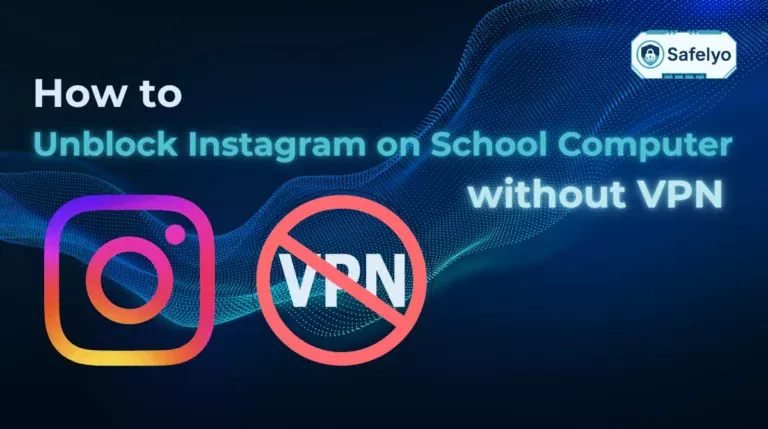Want to send messages without revealing your identity? Learning how to send an anonymous text can help you communicate privately, securely, and discreetly. Whether you’re giving honest feedback, sending reminders, or simply protecting your personal number, anonymous texting is the safest way to get your message across.
In this step-by-step guide, you’ll discover how to:
- Step-by-step methods to send anonymous texts using apps, websites, email-to-SMS gateways, and Google Voice.
- Proven safety tips to protect your privacy and avoid legal issues.
- Common mistakes to avoid that could compromise your anonymity.
- Clear answers to frequently asked questions about anonymous texting.
Keep reading to unlock all the tools, tips, and tricks you need to send anonymous texts confidently and safely, whether it’s for work, personal communication, or keeping your identity private.
1. What does “anonymous text” mean?
Sending an anonymous text means sending a message without revealing your identity. The recipient cannot trace the message back to your phone number, email, or personal information. Understanding what an anonymous text is helps you choose the right method and use it safely in different situations.
An anonymous text can be useful in professional, personal, or sensitive contexts. It allows you to maintain privacy, provide honest feedback, or communicate discreetly without exposing yourself. However, it’s important to know when it is appropriate to send such messages and when it is not.
Benefits of sending anonymous messages
- Privacy protection: Your identity stays hidden.
- Freedom of expression: Share opinions or feedback honestly without fear of judgment.
- Discretion: Ideal for sensitive communications where revealing your identity is not safe.
When to send and when not to send anonymous texts
Anonymous texting is best for professional feedback, reporting issues, or sending lighthearted messages. Avoid using it for harassment, threats, or illegal activities, as these can lead to serious legal consequences.
2. How to send an anonymous text?
There are several practical ways to send messages anonymously, ranging from apps to online services. Choosing the right method depends on how often you want to send messages, the level of privacy you need, and whether you prefer mobile or desktop tools.
2.1. Using a mobile phone app
Mobile apps designed for anonymous texting make it easy to hide your number. Popular options include TextMe, TextFree, and SpoofCard, which provide a temporary number or mask your real number.
Step 1: Download an anonymous text message app
Get an app from the App Store or Google Play Store, such as Pinger, TextPlus, TextNow, Burner, or Wickr Me. Some apps may require a subscription or credits for full features.

Step 2: Open the app
Tap the app icon on your device and allow any necessary permissions, such as access to your microphone.
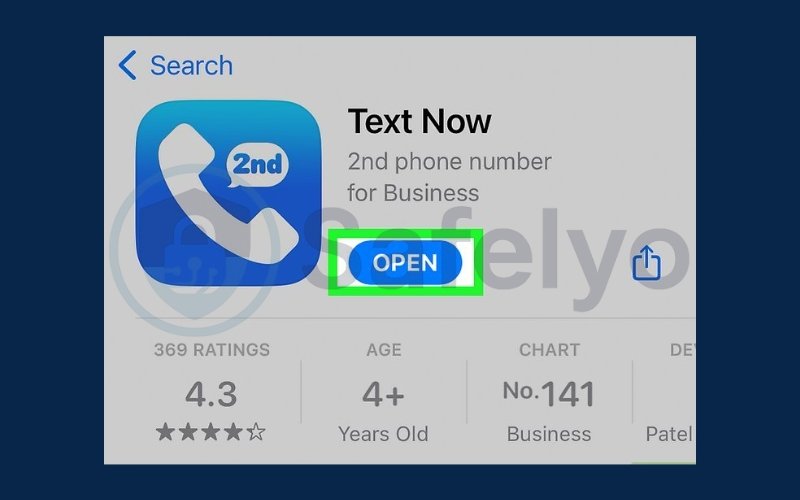
Step 3: Register for an account
Sign up using your real phone number and verify it with the confirmation code sent by the app.

Step 4: Select a burner number
Choose a fake phone number provided by the app. This will be the number used to send your anonymous texts.
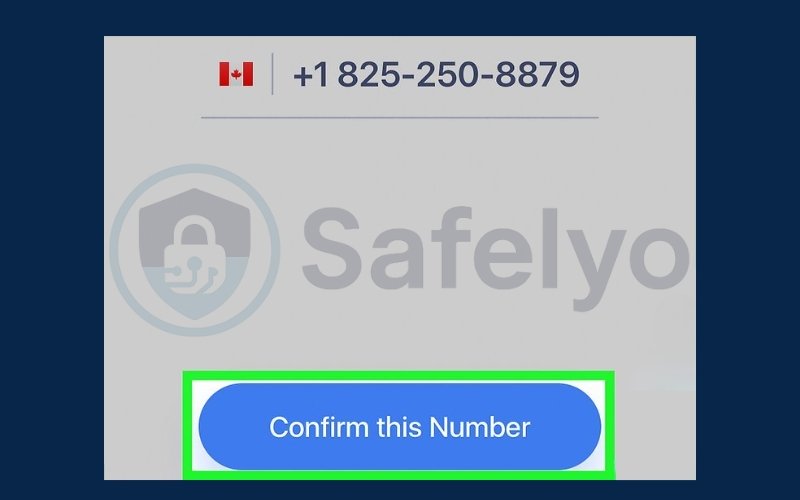
Step 5: Compose a text message
Tap the SMS or chat icon to start writing your message. Some apps also allow anonymous calls.

Step 6: Write your message
Enter the text you want to send in the message field.

Step 7: Enter the recipient’s phone number
Type the recipient’s number in the “To” or “Recipient” field.
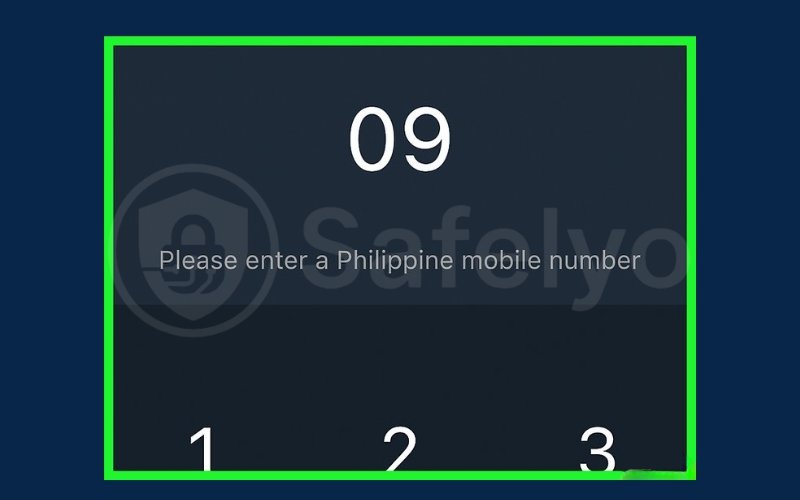
Step 8: Send your anonymous text
Tap the Send icon (paper airplane or arrow) to deliver your message. For extra privacy, consider using a VPN while sending.

2.2. Using an anonymous text message website
Sending an anonymous text doesn’t always require an app. You can also use anonymous text message websites that let you send messages directly from your browser. These websites provide temporary or fake numbers, making it easy to stay private while communicating without revealing your identity.
Step 1: Navigate to an anonymous texting website
Use websites like Anonymoustext.com, Anonymoustexting.com, Texttasy.com, or SendAnonymousSMS.com to send anonymous text messages. You can search for them using Google or another search engine.
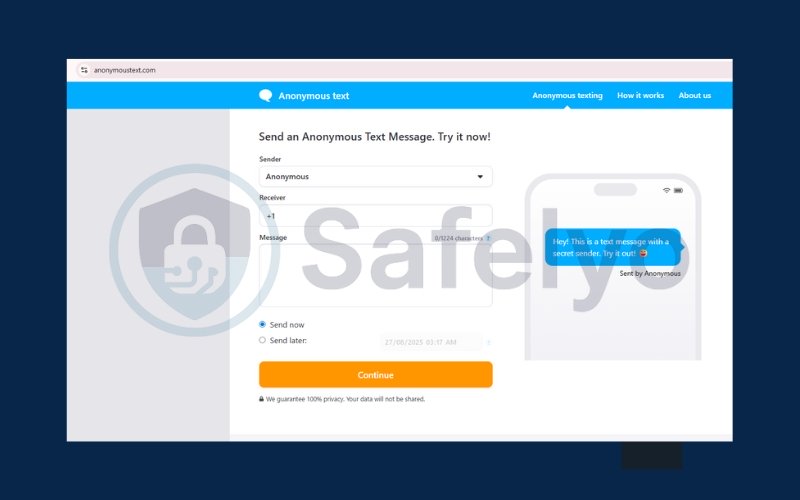
Step 2: Read the website rules
Check the Terms of Service and rules, which usually prohibit fraud, stalking, or illegal activities. Some services may track your IP address, so for extra privacy, consider using a VPN.
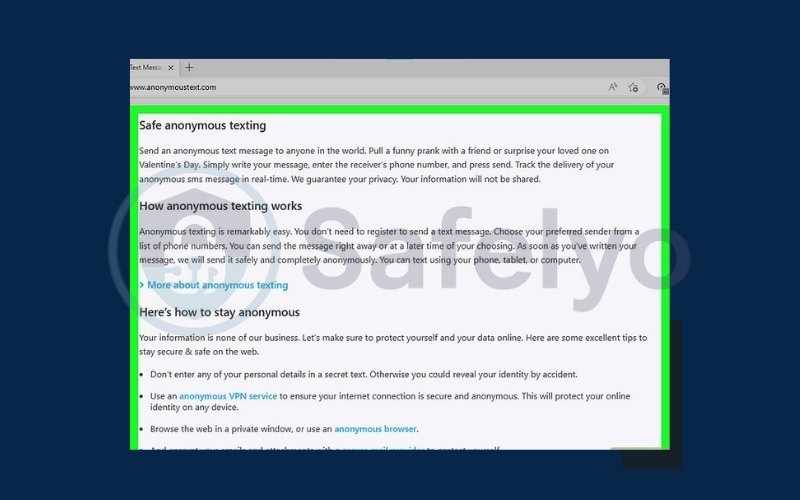
Step 3: Select a phone number
Choose a fake number from the drop-down menu or select an option like “Anonymous” if available. Some services may ask you to enter a number manually.
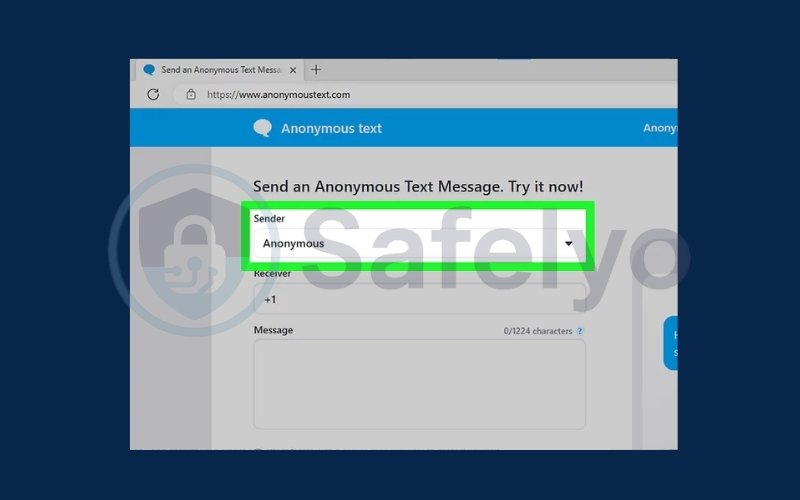
Step 4: Type the recipient’s phone number
Enter the full recipient’s phone number, including the area code. Some websites may also ask for the mobile carrier or country.
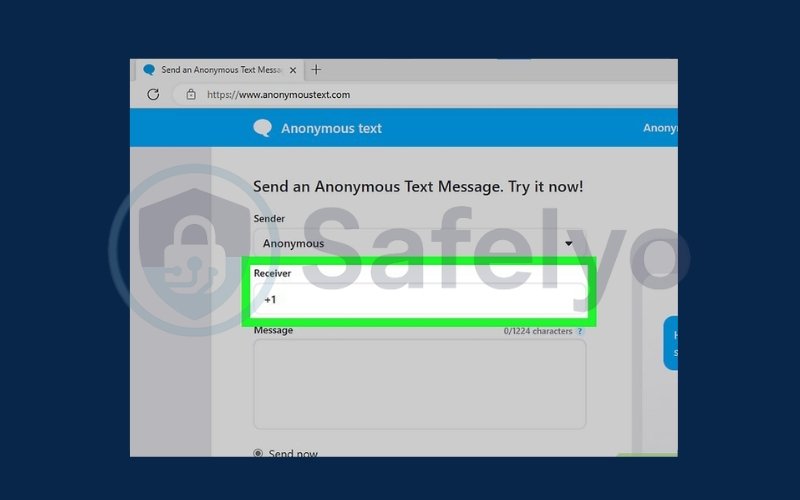
Step 5: Write your message
Compose your text in the message box provided. Be aware of character limits, which can range from 130 to 500 characters.

Step 6: Click the Send button
Tap the Send button to deliver your anonymous text message.
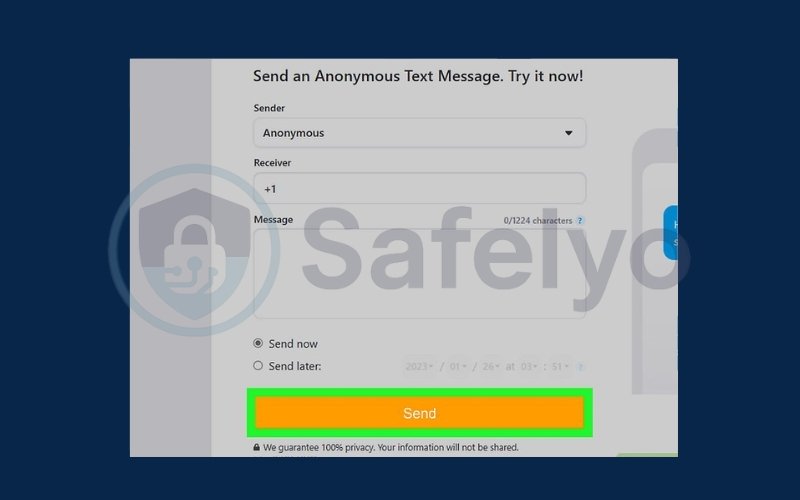
2.3. Using an E-mail account
You don’t always need an app or website to send an anonymous text. By using a new or anonymous email account, you can send messages directly to a recipient’s phone via their carrier’s email-to-SMS gateway. This method keeps your identity hidden while allowing you to deliver text messages safely and discreetly.
Step 1: Create a new e-mail account
Set up a completely new email account using Gmail, Yahoo, or another provider. Avoid using your personal email to keep your identity private. For extra security, consider anonymous email services like ProtonMail or Guerrilla Mail.
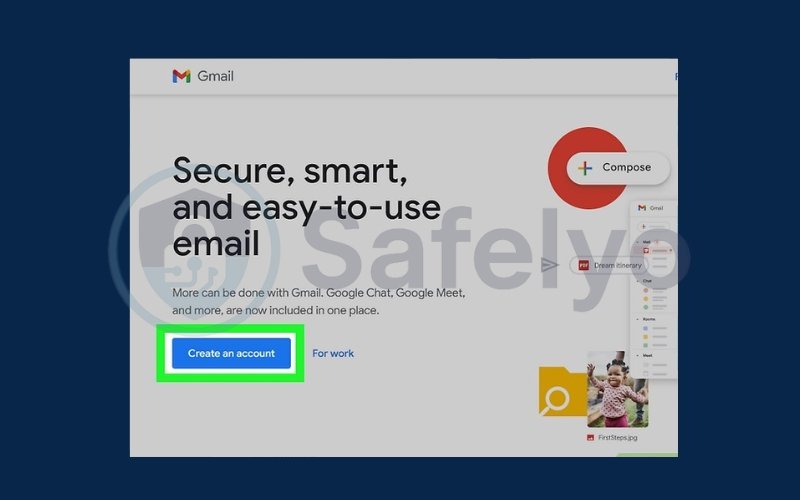
Step 2: Get the recipient’s phone number
Confirm the phone number of the person you want to send an anonymous text to.
Step 3: Discover the person’s carrier
Find out the recipient’s mobile carrier (AT&T, T-Mobile, Verizon, Sprint, etc.). You can ask them directly or use tools like CarrierLookup.com.
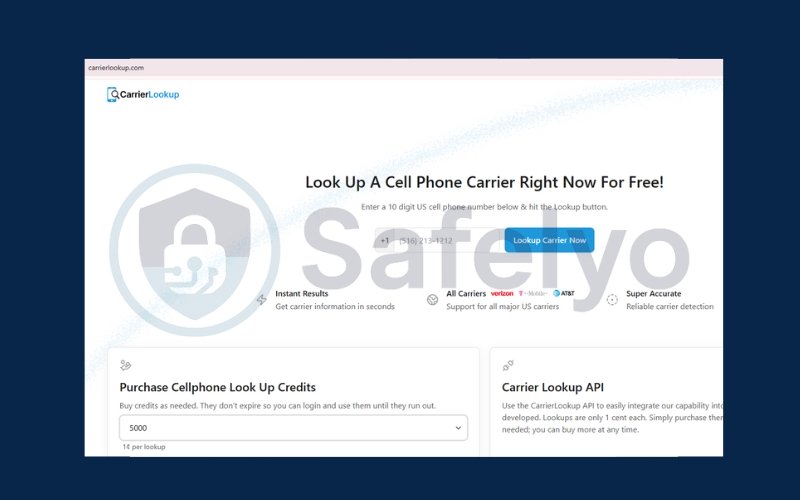
Step 4: Combine the phone number with the carrier’s email domain
Each carrier has a domain to send a text via email. For example:
- AT&T SMS: @txt.att.net, MMS: @mms.att.net
- T-Mobile SMS/MMS: @tmomail.net
- Verizon SMS: @vtext.com, MMS: @vzwpix.com
- Sprint SMS: @messaging.sprintpcs.com, MMS: @pm.sprint.com
(Use the recipient’s 10-digit number combined with the domain, e.g., 1234567890@txt.att.net)

Step 5: Compose a new e-mail
Log into your anonymous email account and create a new message. Enter the recipient’s 10-digit phone number with their carrier domain in the “To” field. Leave the Subject line blank to make it appear like a standard text message.

Step 6: Send the anonymous text
Click the Send button (paper airplane or arrow icon) to deliver your message. For added privacy, consider using a VPN.
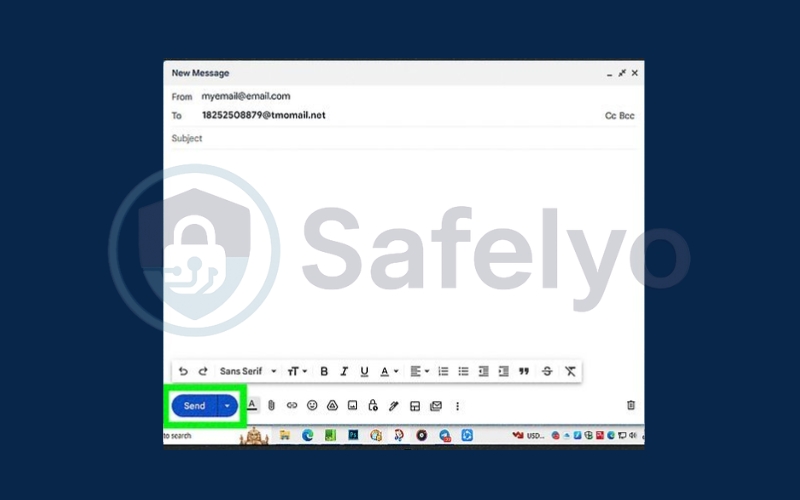
2.4 Using Google Voice
Using Google Voice is a reliable way to send anonymous texts without revealing your personal phone number. By creating a separate Google Voice number, you can compose and send messages directly from the app while keeping your identity private. This method works on both iPhone and Android devices, providing a secure and convenient option for anonymous communication.
Step 1: Download the Google Voice app
Get the free Google Voice app from the App Store or Google Play Store. It allows you to select a phone number to make calls and send text messages.
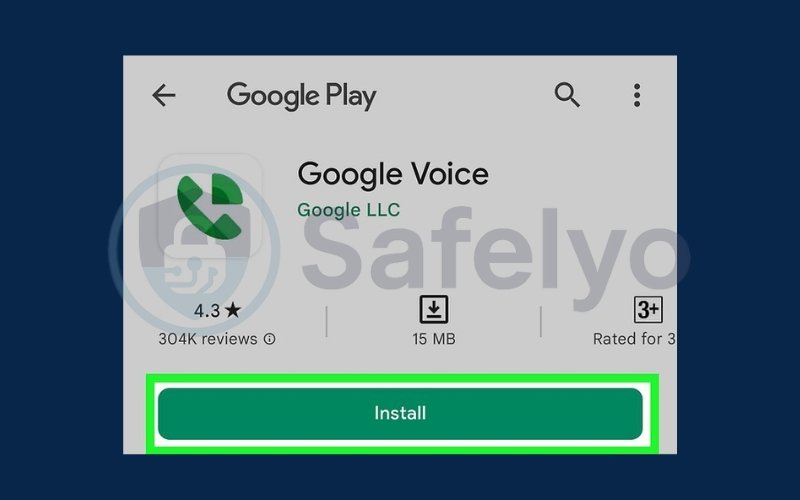
Step 2: Set up your Google Voice account
You need a Gmail account, preferably a new one without personal information. To set up your account:
- Open the Google Voice app.
- Sign in or select the Gmail account you want to use.
- Read the Terms & Conditions and tap Continue.
- Tap Search, then enter your zip code or area code.
- Browse the available numbers and select a Google Voice phone number.
- Verify your existing phone number.
- Choose whether to link your Google Voice number with your phone.
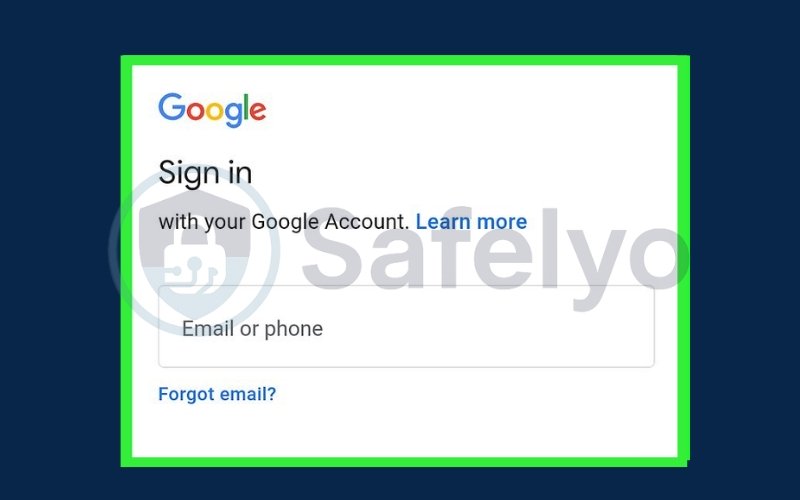
Step 3: Open the Google Voice app
Tap the Google Voice icon on your Home screen or Apps menu to launch the app.
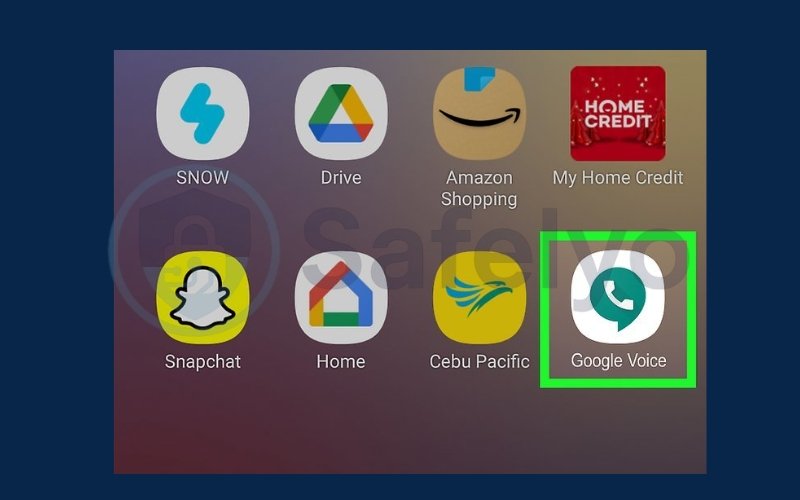
Step 4: Tap the Messages tab
Select the Messages icon (text bubble) at the bottom of the screen to view or send text messages.
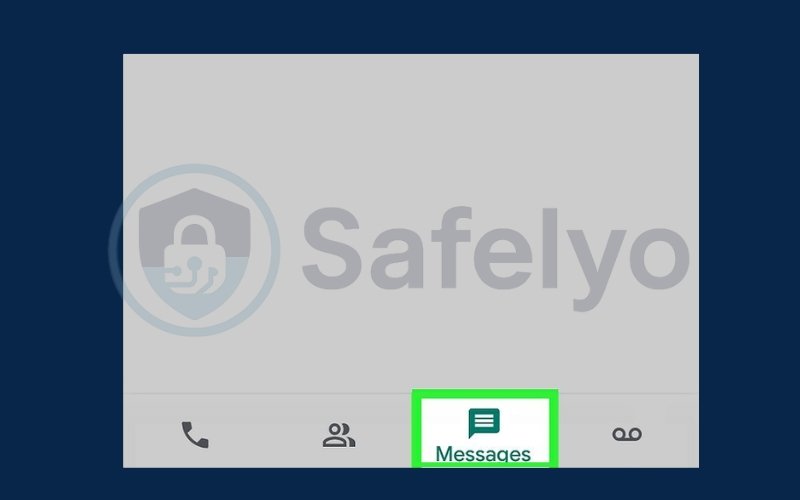
Step 5: Tap the pencil icon
Tap the green pencil icon in the lower-right corner to compose a new message.
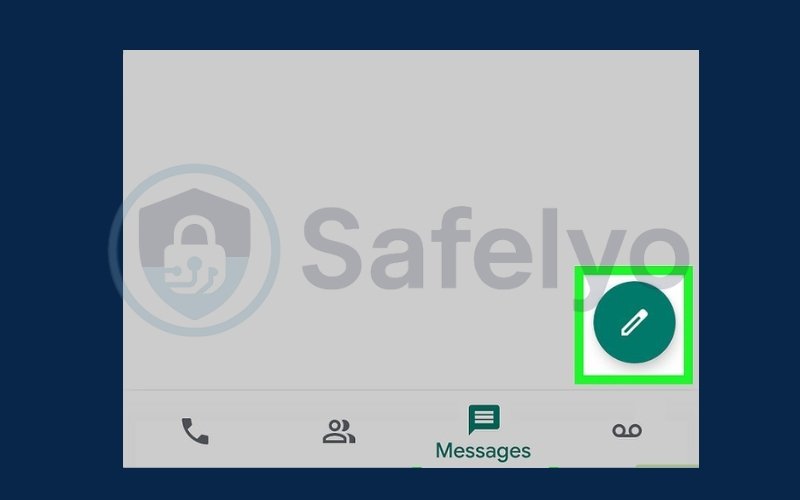
Step 6: Enter the recipient’s phone number
Type the recipient’s phone number in the “To” field or select from your contacts.
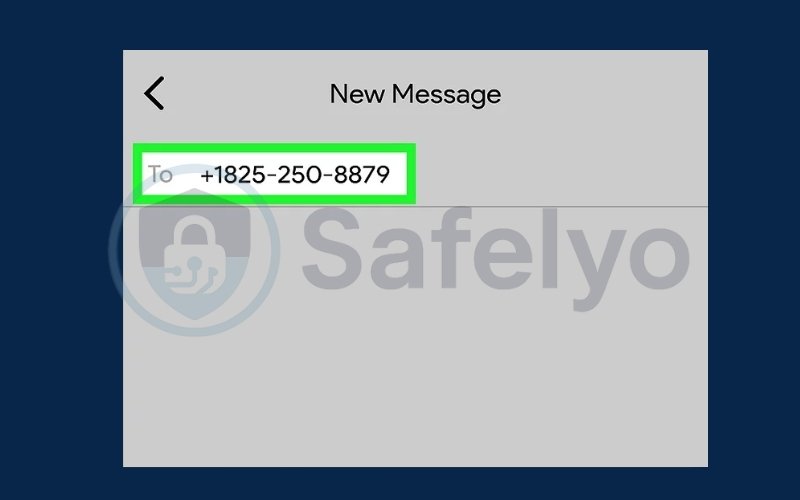
Step 7: Enter your text message
Type the message you want to send in the text field at the bottom of the screen.

Step 8: Tap the Send icon
Tap the Send icon (paper airplane) to send your text using your Google Voice number.
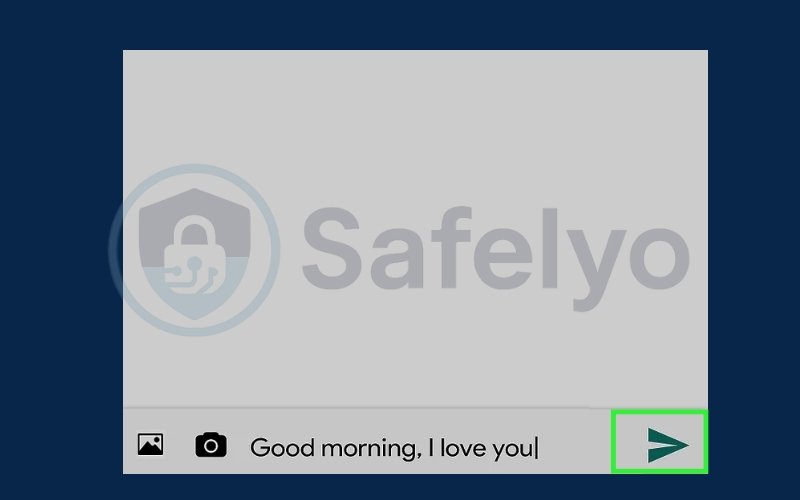
3. Tips for safe anonymous texting
Sending anonymous texts can be a convenient way to communicate privately, but it’s essential to do so responsibly to protect yourself and others. Without caution, anonymous texting can expose you to privacy risks or even legal issues. Here are some detailed tips to ensure safe and responsible usage:
3.1. Protect your personal information
Never include your real name, phone number, address, or other identifiable details in the message. Even seemingly harmless details can allow someone to trace the text back to you. Use temporary email addresses, burner numbers, or apps that hide your identity.
3.2. Verify the legality in your region
Laws regarding anonymous texting vary between countries and states. Avoid sending messages that could be considered harassment, threats, or spam. Check local regulations to ensure your messages comply with the law.
3.3. Avoid harassment or spamming
Sending repeated or unwanted messages can be illegal and may result in serious consequences. Only send anonymous texts for legitimate reasons, such as feedback, reminders, or discreet communication with consent.
3.4. Use secure services
Choose trusted apps, websites, or email-to-SMS gateways that prioritize privacy. Free or unreliable services may log your activity or share data with third parties. For extra security, consider using a VPN to mask your IP address when sending messages.
3.5. Keep a record for reference
If you are sending messages for legitimate purposes (e.g., work-related feedback), maintain a record of your communications in a secure location. This can protect you if any disputes arise while maintaining anonymity for the recipient.
3.6. Limit message content
Avoid sharing sensitive or confidential information in an anonymous text. Keep your messages short, clear, and neutral to reduce risks of misunderstanding or legal trouble.
Read more:
4. Common mistakes to avoid
Even when sending anonymous texts with good intentions, certain mistakes can compromise your privacy or even lead to legal issues. Being aware of these common pitfalls will help you maintain anonymity and use anonymous texting safely.
4.1. Using unreliable services
Free or unknown apps and websites may log your activity, sell your data, or fail to properly hide your identity. Always choose trusted platforms, check reviews, and ensure the service prioritizes privacy and security before sending anonymous messages.
4.2. Sending sensitive or illegal messages
Avoid sending threats, harassment, spam, or any messages that could be considered illegal. Even if your identity is hidden, authorities can track your activity through IP addresses, phone carriers, or email providers. Sending unlawful content can lead to criminal charges or civil liabilities.
4.3. Forgetting to delete message history
Some apps and websites store sent messages in your account or on your device. Leaving these messages accessible may compromise your anonymity. Always delete message history and clear app caches after sending, especially if you are using shared or public devices.
4.4. Overlooking recipient information
Sending messages to the wrong number, carrier, or using incorrect formatting can expose your attempt to remain anonymous. Double-check the recipient’s phone number and carrier information before sending your text.
4.5. Ignoring privacy-enhancing tools
Not using additional privacy measures, such as a VPN or temporary email, can leave your identity traceable. Incorporating these tools strengthens your anonymity when sending texts online.
By avoiding these mistakes, you can ensure that your anonymous texting remains secure, private, and responsible. Awareness of potential risks helps protect both your privacy and legal safety.
5. FAQs about how to send an anonymous text
Sending anonymous texts can raise many questions, especially about privacy, legality, and service reliability. This FAQ section answers the most common concerns to help you use anonymous texting safely and effectively.
Can I really send a text completely anonymously?
Yes. Using virtual numbers, anonymous texting apps, email-to-SMS gateways, or Google Voice can hide your identity. However, complete anonymity depends on the service’s privacy policies. Some platforms may log IP addresses or account activity, so choosing trusted services is essential for maintaining full privacy.
Are anonymous texting services free?
Many services offer free anonymous texting options with certain limitations, such as the number of messages or character limits. Paid versions provide additional benefits, including unlimited messages, international texting, and multiple virtual numbers for enhanced privacy.
Is it legal to send anonymous texts?
Yes, anonymous texting is legal in most regions if used responsibly. However, sending threats, harassment, spam, or illegal content is prohibited and can lead to criminal charges or civil liability. Always check local laws before sending messages to avoid legal trouble.
Can I trace an anonymous text back to the sender?
It is sometimes possible. Certain anonymous texting apps or websites may retain logs, and authorities can track messages through IP addresses, carrier information, or email records if illegal activity is involved. Using a VPN and trusted platforms reduces the risk of being traced.
What is the safest method for sending anonymous texts?
The safest methods include using reputable apps, email-to-SMS gateways, or Google Voice with a new account not linked to your personal information. Avoid unverified websites and always follow privacy and legal guidelines to maintain full anonymity.
6. Conclusion
Learning how to send an anonymous text allows you to communicate privately, discreetly, and securely. Whether you are sharing honest feedback, sending reminders, or protecting your identity, using the right tools makes a significant difference.
Here’s a quick recap of the main methods for how to send an anonymous text:
- Mobile phone apps: Use apps that provide temporary or burner numbers.
- Anonymous websites: Send texts directly from trusted online platforms.
- Email-to-SMS gateways: Use a new or anonymous email account to text via the recipient’s carrier.
- Google Voice: Create a separate number to send and receive messages securely.
Always prioritize privacy, legality, and responsibility. By following these tips and using these methods safely, you can send anonymous texts without exposing your identity or putting yourself at risk. For more easy-to-follow guides and practical tech tips, check out the Tech How-To Simplified category on Safelyo. You’ll find clear, reliable instructions for online privacy, digital security, and a wide range of everyday tech tasks, helping you navigate technology safely and confidently.




